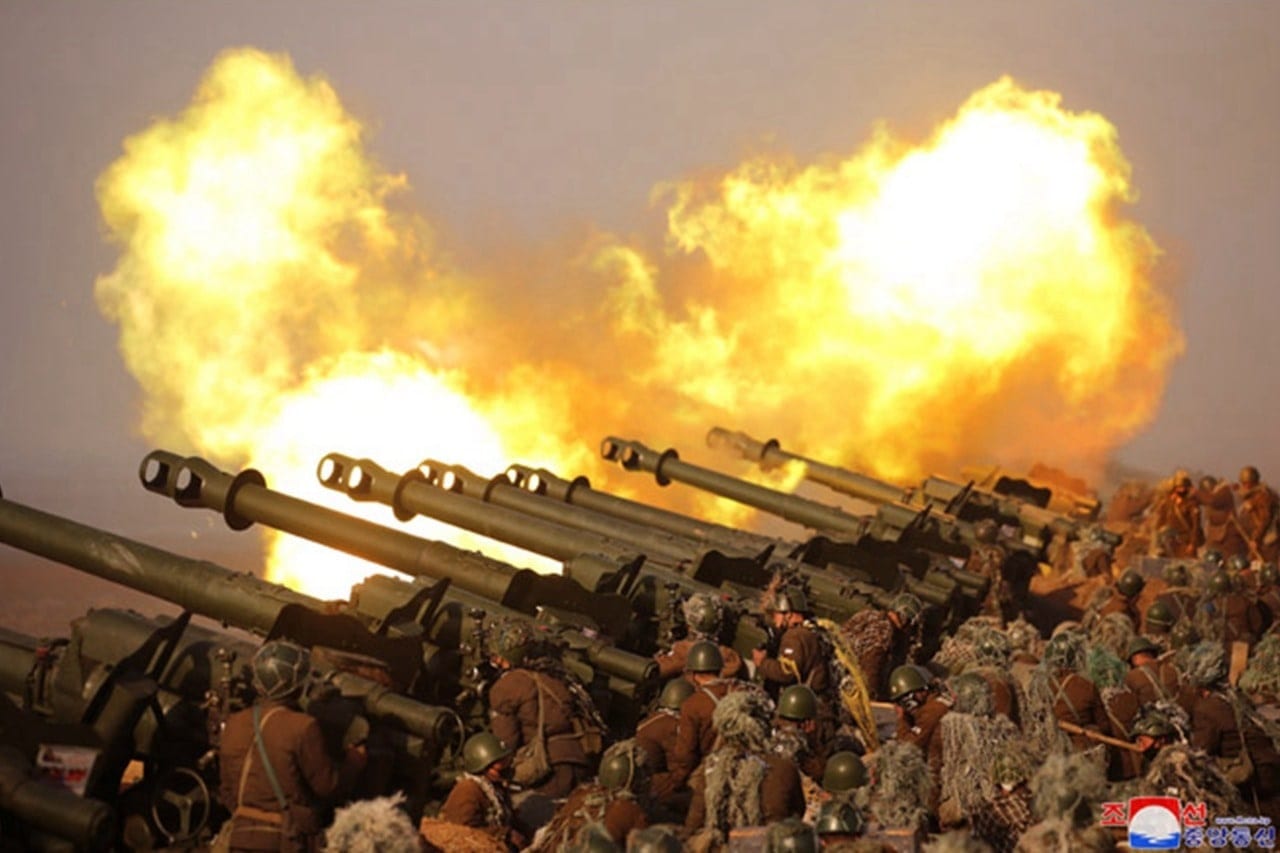On Wednesday, North Korea fired roughly 100 artillery shells into the sea. North Korea’s shell firing is understood to have been in response to South Korea’s own live-firing exercise, which occurred near the border between the two countries.
South Korea detected the North Korean test. The test is the second in as many days; on Tuesday, North Korea fired 100 shells from their western coast, plus another 150 shells from their eastern coast. And, last Friday, North Korea fired “hundreds” of shells. During each live-fire, the North Korean shells landed in northern parts of the maritime buffer zones, which “the two Koreas created off their eastern and western coasts” as part of a 2018 agreement. The agreement’s purpose? To reduce tensions on the peninsula. Now, however, both countries are accusing the other of ratcheting up tension on the peninsula.
“Our army strongly warns the enemy forces to immediately stop the highly irritating provocative act in the frontline areas,” a North Korean army official said in a statement.
South Korea is defending their own live-fire tests; the South Koreans said they conducted their artillery drills as another part of their annual military exercise – essentially, business as usual.
Tensions between North and South Korea are not likely to abate – at least not in the next week or so; South Korea will be conducting combined air force drills with the United States from October 31st until November 4th. The drills will involve about 240 warplanes, including the F-35 Joint Strike Fighter. “The drills are designed to inspect the two countries’ joint operation capabilities and improve combat readiness,” the Associated Press reported.
The recent artillery shelling is likely unnerving for South Koreans. Despite all the recent discussion regarding North Korea’s nuclear weapons program, North Korea’s conventional weapons still have the capacity to raize South Korea.
North Korea keeps about 6,000 artillery systems pointed at South Korean population centers. If North Korea ever decided to unleash their conventional artillery upon South Korea, thousands would be killed in just an hour – without the use of nuclear or chemical weapons. RAND Corporation estimated that a North Korean conventional attack could lead to between 4,500 and 200,000 casualties. RAND concluded that “because so much harm could be done so quickly, the United States and South Korea should try to avoid military provocation cycles that could lead to these attacks.”
Nevertheless, North Korea’s nuclear weapon program concerns the US and South Korea. Current estimates hold that North Korea possesses as many as 30 to 40 nuclear weapons – with the fissile material available to develop six or seven additional nuclear weapons per year. North Korea conducted their first ever thermo nuclear test in 2017. And North Korea has developed the ICBM technology to deliver their thermo nuclear device anywhere within 13,000 kilometers. That’s enough range to hit anywhere in the continental US, anywhere in Europe, anywhere in Asia. North Korea is indeed a nuclear power. Similarly concerning, North Korea has a stockpile of chemical and biological weapons. A 2009 report, from the International Crisis Group, noted that North Korea’s chemical weapons stockpile likely included between 2,500 and 5,000 tons of chemical weapons – including: mustard, phosgene, blood agents, sarin, tabun, and V-agents.
Accordingly, given the threat of conventional, nuclear, and bio-chemical weapons – and given that North Korea may lack the ability to compete in symmetrical warfare with its rivals and may instead default toward asymmetrical fighting – adversaries like the US and South Korea should be cautious about provoking the Kim regime.
Harrison Kass is the Senior Defense Editor at 19FortyFive. An attorney, pilot, guitarist, and minor pro hockey player, he joined the US Air Force as a Pilot Trainee but was medically discharged. Harrison holds a BA from Lake Forest College, a JD from the University of Oregon, and an MA from New York University. He lives in Oregon and listens to Dokken. Follow him on Twitter @harrison_kass.

